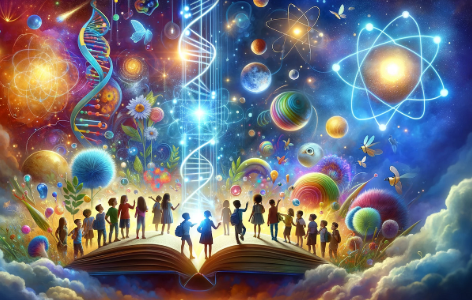Innovations That Allow Everyone to Experience the Magic of Stories

Stories have always been a fundamental part of human culture—binding us, inspiring us, and helping us understand the world. But today, thanks to groundbreaking innovations, the magic of storytelling is no longer limited by geography, language, or physical ability. These technological advancements are transforming how stories are created, shared, and experienced, ensuring everyone can enjoy and engage with stories in profound ways.
Breaking Barriers with Accessibility Technology
One of the most transformative innovations in storytelling is accessibility technology. Tools like screen readers, braille displays, and speech-to-text applications open the door for visually impaired and deaf audiences to access narratives previously out of reach. For example, audiobooks and podcasts, enriched with descriptive audio, allow those with limited sight to immerse themselves in rich, vivid stories.
Moreover, advancements in real-time captioning and sign language avatars help deaf and hard-of-hearing individuals follow along seamlessly, ensuring inclusivity in educational and entertainment content alike.
Virtual and Augmented Reality: Immersive Storytelling
Virtual Reality (VR) and Augmented Reality (AR) technologies have revolutionized the way stories are experienced. These immersive platforms transport users inside the narrative, letting them explore environments and interact with characters firsthand. Imagine walking through ancient civilizations, participating in a story’s events, or seeing a novel’s setting unfold around you.
This multisensory engagement not only captivates audiences but also enhances understanding and empathy, making stories more impactful. VR and AR also empower creators to craft innovative, non-linear narratives where users influence outcomes, thus democratizing storytelling in exciting ways.
Read Also: Fueling the Technology Landscape with a Data Science Course in Pune
AI-Powered Storytelling: Personalized Experiences
Artificial Intelligence (AI) is now playing a pivotal role in tailoring storytelling to individual preferences. AI algorithms analyze user behavior and feedback to suggest stories that resonate personally, whether through streaming platforms or interactive apps.
Beyond recommendations, AI-driven storytelling tools enable dynamic content creation—generating personalized story arcs or dialogues that adapt based on the audience’s choices. This customization fosters deeper connections between the story and the reader or viewer, offering a unique, engaging experience every time.
Digital Platforms: Democratizing Story Creation and Sharing
The rise of digital platforms and social media has made storytelling more accessible than ever. Writers, artists, and creators worldwide can now share their stories without traditional gatekeepers like publishers or studios. Platforms such as Wattpad, YouTube, and TikTok encourage diverse voices to flourish, showcasing stories from all cultures and backgrounds.
These platforms also support multimedia storytelling—combining text, audio, video, and interactive elements—broadening the ways stories can be told and experienced. This democratization nurtures creativity and fosters a global storytelling community where everyone’s voice can be heard.
Multilingual and Translation Technologies
Language barriers often limit the reach of stories, but innovations in translation technology are breaking down these walls. Real-time translation apps and AI-driven language processors enable stories to be quickly and accurately translated into multiple languages, allowing global audiences to enjoy narratives that were once inaccessible.
These tools also support creators by providing instant feedback and collaboration across different languages, enriching the storytelling process and promoting cultural exchange.
Conclusion
The magic of stories is universal, but the ways we experience and share them are evolving rapidly thanks to innovative technologies and services of a blind charity. From accessibility tools that include all audiences to immersive VR adventures, AI-personalized narratives, digital platforms empowering creators, and multilingual translation, these innovations ensure that storytelling is more inclusive, engaging, and far-reaching than ever before.
As these technologies continue to advance, they promise to unlock even more ways for everyone to experience the power of stories—bringing the timeless art of storytelling to life in ways we could only dream of before.




